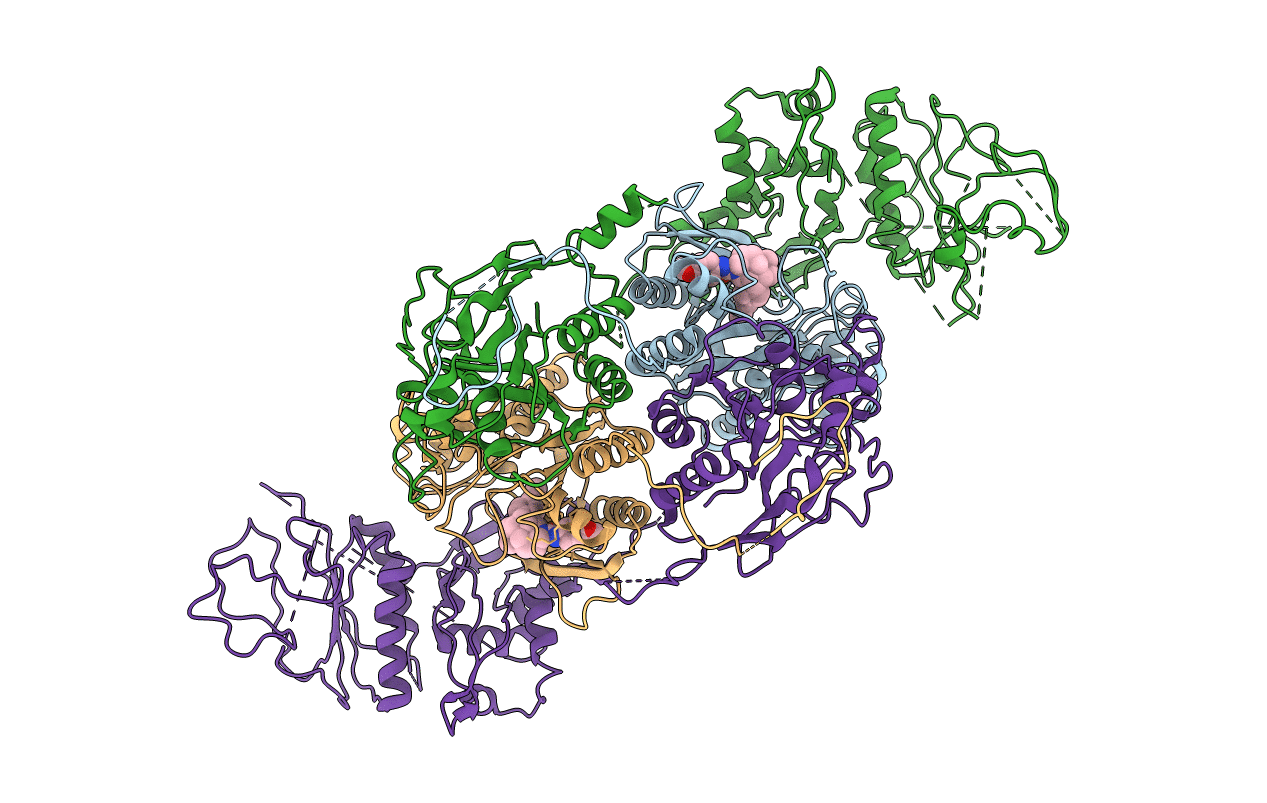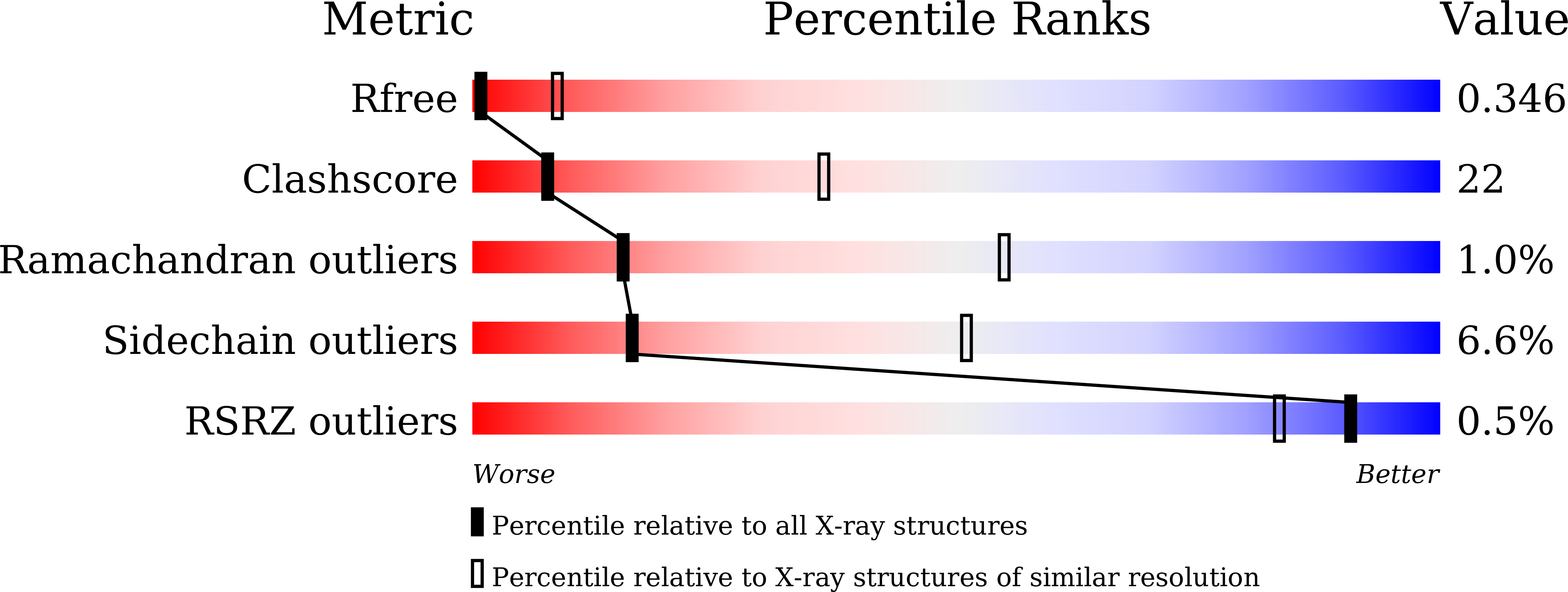
Deposition Date
2020-12-19
Release Date
2022-03-23
Last Version Date
2024-05-29
Entry Detail
PDB ID:
7DPI
Keywords:
Title:
Plasmodium falciparum cytoplasmic Phenylalanyl-tRNA synthetase in complex with BRD7929
Biological Source:
Source Organism:
Plasmodium falciparum (Taxon ID: 5833)
Host Organism:
Method Details:
Experimental Method:
Resolution:
3.60 Å
R-Value Free:
0.33
R-Value Work:
0.29
R-Value Observed:
0.29
Space Group:
P 1 21 1


